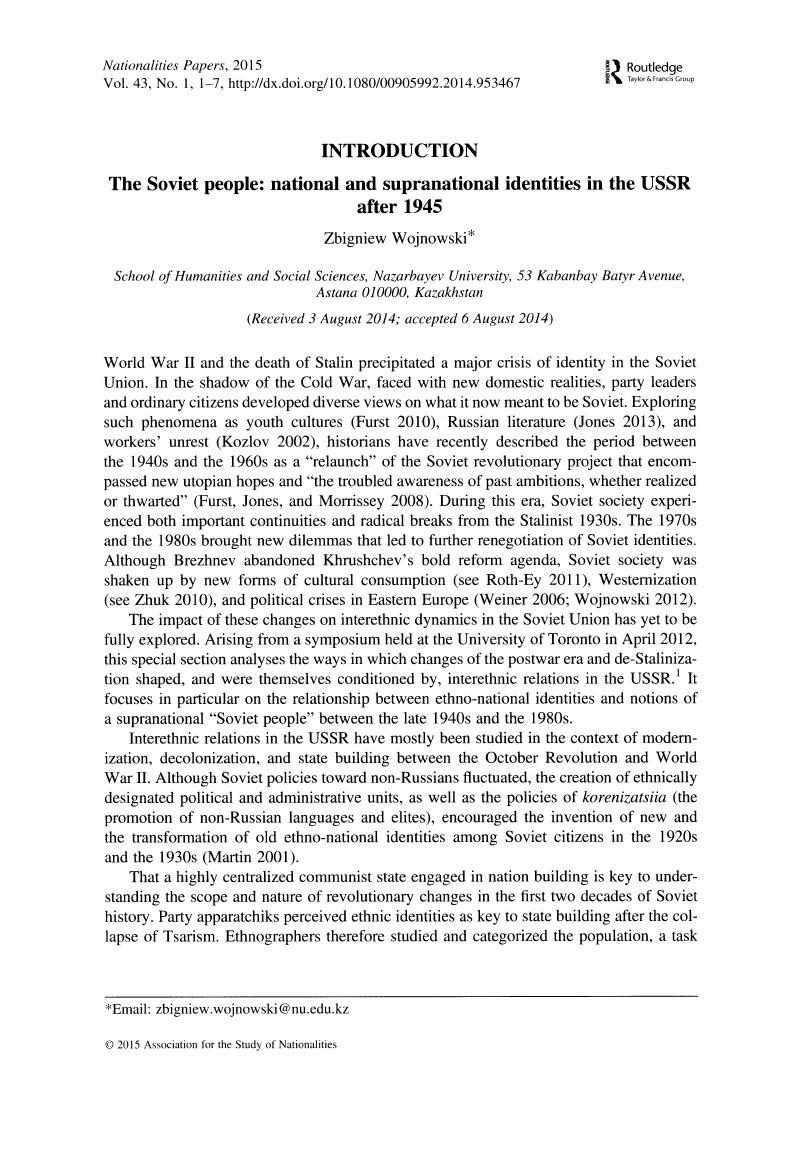Crossref Citations
This article has been cited by the following publications. This list is generated based on data provided by Crossref.
Górny, Agata
and
Napierała, Joanna
2016.
Comparing the effectiveness of respondent-driven sampling and quota sampling in migration research.
International Journal of Social Research Methodology,
Vol. 19,
Issue. 6,
p.
645.
Sperling, Walter
and
Lefranc, Alban
2017.
Grozny : réinventer une « petite Union soviétique » dans le Caucase.
Le Mouvement Social,
Vol. n° 260,
Issue. 3,
p.
71.
Shumylovych, Bohdan
2019.
Fragmenting soviet mythologies: romantic imagery and musical films in Ukraine.
Studies in Eastern European Cinema,
Vol. 10,
Issue. 2,
p.
111.
Велкова, Кристина
2020.
Множественные идентичности русских и болгар: кросс-культурный анализ.
Психологические исследования,
Vol. 13,
Issue. 73,
GÜL, Yavuz Ercan
2021.
Kırgızistan’da SSCB Sosyo-Politik Eğitim Sistemi ve Kahrolsun Cehalet Derneği’nin Faaliyetleri (1924-1927).
Bilig,
p.
115.
Franck, Thomas
2021.
Paradoxes idéologiques du discours soviétique : hygiénisme, puritanisme moral et mythification du peuple.
Témoigner. Entre histoire et mémoire,
p.
125.
Bultseva, M.A.
Bushina, E.V.
Berberyan, A.S.
and
Kodja, E.A.
2021.
The Role of Soviet Identity in the Relationship of Multiculturalism and Boundaries Permeability for Russians in Armenia.
Cultural-Historical Psychology,
Vol. 17,
Issue. 4,
p.
56.
Studenna-Skrukwa, Marta
2022.
Between socialist homeland and totalitarian dictatorship. The image of the post-World War II period in Ukrainian historical discourse.
Rocznik Instytutu Europy Środkowo-Wschodniej,
Vol. 20,
Issue. 1,
p.
183.
John, Leei
Robertson, Marc
Tetley, Kate
and
Seaman, Claire
2023.
Entrepreneurship education in Post-Soviet states developing programmes for hospitality and tourism students in Samarkand.
Journal of Enterprising Communities: People and Places in the Global Economy,
Vol. 17,
Issue. 2,
p.
209.
López Jiménez, José Ángel
2023.
Construcción y deconstrucción de identidades nacionales en transición tras la disolución de la Unión Soviética: de la Moldavia soviética a la Moldova independiente (1989-1994).
Revista Mexicana de Ciencias Políticas y Sociales,
Vol. 63,
Issue. 248,
Jarlhøj, Morten Emil
and
Valijärvi, Riitta-Liisa
2024.
Changing language policies and ideologies in Kazakhstan: an interview-based study.
SN Social Sciences,
Vol. 4,
Issue. 2,



